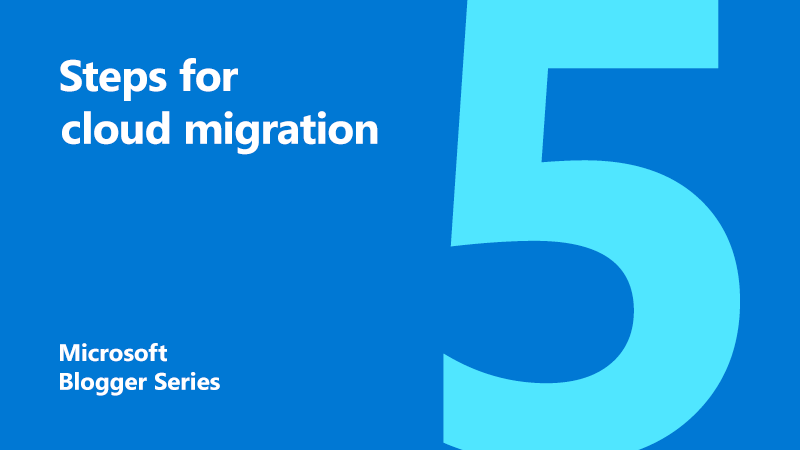
Healthcare’s ready for the cloud: 5 steps for a successful migration
It’s been a while coming, but healthcare is finally ready to take the plunge and embrace the cloud.
For hospitals, it seems ‘move to the cloud’ isn’t quite as straight forward as everyone at first thought. And, for some, this has caused some confusion and decision paralysis. What’s needed are practical steps detailing how hospital leadership teams can begin moving patient and administrative data to the cloud and leveraging the benefits that the cloud offers.
In terms of technological advancement, healthcare is often at the cutting edge. Just consider genome sequencing or 4D foetal ultrasounds. In contrast, progress and investment in healthcare IT and infrastructure often lags behind other industries. Cloud solutions are a perfect example; healthcare has been one of the last bastions resisting the transition. Until now.
The challenges: What’s been holding back cloud adoption in healthcare?
Security and privacy
Security and privacy have always been one of the big objections that healthcare organisations put forward. However, the success and relative safety around online banking and shopping has meant privacy concerns around the online storage of medical records are fading. Today’s cloud providers employ state-of-the-art military-grade protection to keep data secure; technology likely beyond the reach of a typical hospital.
Data location and ownership
Data location and ownership was another challenge. While there are stringent rules around the use of the public cloud for healthcare data, regulations prohibiting its use have gradually been relaxed. Now, we face an open market where healthcare providers have choices as to where and how they manage their data online.
Funding models
Funding models are still a big hurdle, and hospitals continue to work on ways by which cloud technologies can be more easily procured. At a recent UK healthcare conference, one NHS Trust spokesperson declared that their IT policy mandated a ‘cloud-first’ strategy, yet the procurement department would not readily approve cloud purchases. A discussion then followed about ‘Capex v Opex’ and ‘VAT v no VAT’ that created an impasse. Until some of these barriers are eliminated, a hospital’s pathway to the cloud can remain blocked.
The benefits and advantages
Despite myriad challenges getting the cloud adopted within healthcare facilities, the advantages for transition are as strong, if not stronger, than they have ever been.
- Storage in the cloud is very cost effective
- Upscaling or downscaling of IT resources (of almost any kind) ‘on demand’ is quick and easy
- State-of-the-art system and data protection and disaster recovery are provided
- Hardware replacement costs are reduced or eliminated
- The resources to maintain or upgrade on-premise infrastructure are freed up
Yet, with all of these benefits, there is still one unanswered question thwarting cloud migration and that is..
How do I do it?
5 strategic steps to help hospitals migrate data to the cloud
Step 1 – Focus on data first
All too often, hospital leadership teams get tunnel-vision when trying to move their applications to the cloud. Not only is this challenging – many applications weren’t built with the cloud in mind – but it’s also the wrong way to think.
By and large, it’s not the applications that are the strategic asset; it’s the data they contain. So, healthcare organisations should be focusing on moving data before moving applications to the cloud.
Step 2 – Start with the lowest handing fruit: legacy application data
If you plan to use the cloud to host all or most of your patient and administrative data, it’s easy to consider taking the ‘big bang’ approach and get it all done in one hit.
Take a deep breath!
Don’t set yourself up for failure. The cloud is a very different beast than locally owned, on-premise solutions. Start with a trial project. Pick one application, preferably a legacy application, as these are generally the most vulnerable and prone to cyber-attack. Once the data from a legacy application has been moved to the cloud, you can effectively decommission those applications, saving time, costs, and manpower.
Mistakes will almost certainly be made, but you’ll learn an inordinate amount in the process, which will help you create a blueprint for your future success.
Step 3 – Consider an Independent Clinical Archive in the cloud
Where the data resides and how you access it is an essential consideration. It’s all very well to make the decision to transition to the cloud, but you still need to know…
- Where your data is going to live
- That it is being looked after properly
- That it is readily available and accessible to your users
- That your users have the tools they need to carry out their duties.
One way to satisfy all of the above is to deploy an Independent Clinical Archive.
BridgeHead’s ICA, HealthStore®, enables hospitals to easily move live and legacy patient and administrative data to the cloud. By extracting, consolidating, ingesting, indexing, storing, and protecting healthcare data of all types and formats within HealthStore in the cloud, that information can be easily accessed. Typically, this would be through a web portal or through hospital systems, such as the EPR or PACS, to display that data ‘in patient context’ and provide clinicians with a complete 360-degree patient view.
HealthStore offers full information lifecycle management capabilities to ensure compliance and governance obligations are met. It also ensures data is stored efficiently and cost-effectively, according to its value. The tool also offers many additional capabilities to meet specific clinical workflows and pathways, such as secure image capture (e.g. for patient-generated data), diagnostic-grade medical image viewing (including on mobile devices), and a timeline of patient encounters.
Step 4 – Use a reputable cloud vendor
There are a number of cloud providers, each of them vying for your attention, so it’s important to research and choose one you can trust.
Microsoft Azure offers a comprehensive cloud computing service for healthcare. Enabled primarily through Microsoft-managed datacentres, Azure provides integrated cloud services and functionalities across a wide variety of IT provisioning options, such as compute, storage, database, networking, developer tools and other functionality, designed to seamlessly integrate with your healthcare environment and achieve efficiency and scalability.
Beyond these services, Azure also works in concert with BridgeHead’s Independent Clinical Archive. This provides a central repository for patient and administrative data to ensure data interoperability solutions for healthcare.
Step 5 – Scale it and share it
After you’ve completed your first pilot, you and your team will have garnered a lot of insight, knowledge and experience. You’re then in a great position to apply your learnings to new projects, as well as sharing your new-found skills with others in your organisation.
With everything you’ve learnt on your journey to the cloud, you can also share it with other healthcare organisations – just as Darren Atkins, Chief Technology Officer at Chief Technology Officer at East Suffolk and North Essex NHS Foundation Trust, did with his own Microsoft-powered AI technologies.
It was Chinese philosopher Lao Tzu that said, ‘The journey of a thousand miles begins with one step.’ This seems very apt when considering the journey that healthcare organisations need to make to transition to the cloud. However, the benefits of making this move are plain to see.
Cloud migration means you will reduce cost. You will increase efficiency. You will reduce risk. You will create an environment by which clinicians have access to all of the information they need, when they need it. And you will be in a position to truly leverage your data as a strategic asset by which financial and operational, as well as clinical, decisions can be made for a better employee and patient experience.
About the author
 Lucy is an Enterprise Channel Manager within our One Commercial Partner organisation a Microsoft. After spending 12 months supporting the Media and Telecommunications industry, she’s now aligned to Healthcare. In this short time at Microsoft, she has already seen how technologies can transform commercial and public sector organisations. It’s evident how our technology, alongside our extensive partner ecosystem, work together to deliver transformative products and services to our customers. Microsoft AI and cloud services are completely changing how organisations operate, and Lucy is excited to have the opportunity to work with a talented team to deliver this to healthcare customers.
Lucy is an Enterprise Channel Manager within our One Commercial Partner organisation a Microsoft. After spending 12 months supporting the Media and Telecommunications industry, she’s now aligned to Healthcare. In this short time at Microsoft, she has already seen how technologies can transform commercial and public sector organisations. It’s evident how our technology, alongside our extensive partner ecosystem, work together to deliver transformative products and services to our customers. Microsoft AI and cloud services are completely changing how organisations operate, and Lucy is excited to have the opportunity to work with a talented team to deliver this to healthcare customers.




